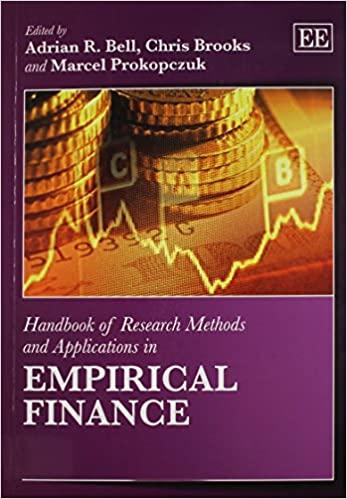Answered step by step
Verified Expert Solution
Question
1 Approved Answer
By January 1 st , 2020, Sam will be 45. She already has a Bachelor of Arts degree in finance. She had obtained that degree
By January 1st, 2020, Sam will be 45. She already has a Bachelor of Arts degree in finance. She had obtained that degree when she was 22. Ever since then, she has been working at a local subsidiary of a multinational oil and gas company. Given her job experience and interests, she is thinking about attending graduate school for a Master of Science degree in accountancy. Consider the details below:
- This graduate program takes two full calendar year, starting from early January 2020 and ending by late December 2021.
- During these two years, she continues to work at her current job, earning a net annual salary of $40,000.
- Provided that she graduates successfully, she will be promoted to a new position at the same firm. She will be earning a net salary of $47,500 in that case; an 18.75% increase in earning.
- She plans to stay at her job until she turns 66.
- The graduate program costs $75,000 per year ($150,000 in total).
- She plans to pay $50,000 at the beginning of the program using some funds that were made available to her through previous family savings. She plans to finance the remainder ($100,000) through student loan.
- The student loan will be paid back in 5 equal installments during 5 years after her graduation. There is also an interest payment of $3,000 per year that should be paid along with the above installments during the window of time when she services her debt (5 years). Like the initial payment of $50,000, all installments and interest payments are paid in early January.
- Compute the present value of the cost of this human capital investment assuming a discount rate of 15%; i.e., r=0.15. Provide details of your computation; e.g., a screenshot of your work in Excel or details of your computation by hand. (10 points)
- Assuming that the benefit of this investment in measured by the post-graduation earning streams, compute the present value of the benefits using the same discount rate (15%). Provide details of your computation; e.g., a screenshot of your work in Excel or details of your computation by hand. (10 points)
- Considering your answers to parts a and b, compute the net present value of this investment. Does it make sense for Sam to invest in graduate studies? (5 points)
- Let us assume that, unlike part b, the benefits are only measured by post-graduation wage premium: $7,500 per year. Compute the present value of the benefits using the same discount rate (15%). Provide details of your computation; e.g., a screenshot of your work in Excel or details of your computation by hand. (10 points)
- Considering your answers to parts a and d, compute the net present value of this investment. Does it make sense for Sam to invest in graduate studies? (5 points)
- Which one of the above assumptions about benefits make sense to you: the assumption in part b or the assumption in part d? Explain why. (10 points)
- Identify the least amount of post-graduation wage premium that would provide same with enough incentives to undertake graduate studies. Provide details of your computation. (10 extra points).
Step by Step Solution
There are 3 Steps involved in it
Step: 1

Get Instant Access to Expert-Tailored Solutions
See step-by-step solutions with expert insights and AI powered tools for academic success
Step: 2

Step: 3

Ace Your Homework with AI
Get the answers you need in no time with our AI-driven, step-by-step assistance
Get Started


